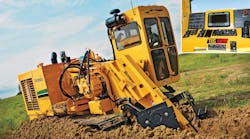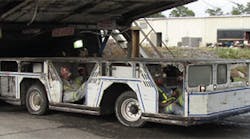Hydrostatic Transmission Uptake on the Rise in Off-Highway Equipment
Adoption of hydrostatic transmissions is increasing in various mobile off-highway equipment applications due to the many benefits this drive technology can provide.
In this video interview with Power & Motion, Tony Welter, President, Hydrostatics Division at Danfoss Power Solutions, discusses the benefits of hydrostatic transmissions and why their use is increasing.
He explained that a hydrostatic transmission is essentially comprised of a pump and a motor that is coupled via a hydraulic hose, and fluid from the pump flows to the motor, turns the motor and turns a vehicle’s wheels in a very simplified fashion.
Read "Hydrostatic Transmissions Offer Range of Benefits and Market Opportunities" for our full interview with Tony Welter of Danfoss to learn more about the continued growth opportunities he sees for hydrostatic transmissions in the mobile off-highway equipment industry.
This design offers many advantages, particularly for off-highway equipment whose architecture may not support a more traditional mechanical transmission design which requires the prime mover, such as an engine, to be in close proximity to the wheels.
“Hydrostatics address that…by giving equipment manufacturers the flexibility to design equipment how they need it,” said Welter.
This design flexibility and other benefits offered by hydrostatic transmissions is leading to their increased use in the off-highway equipment industry. Welter said Danfoss is seeing market growth in machinery applications typically equipped with this type of transmission technology as well as those which have not used it previously.
Read the below articles to learn more about hydrostatic transmissions and their use in off-highway equipment applications.
About the Author
Sara Jensen
Executive Editor, Power & Motion
Sara Jensen is executive editor of Power & Motion, directing expanded coverage into the modern fluid power space, as well as mechatronic and smart technologies. She has over 15 years of publishing experience. Prior to Power & Motion she spent 11 years with a trade publication for engineers of heavy-duty equipment, the last 3 of which were as the editor and brand lead. Over the course of her time in the B2B industry, Sara has gained an extensive knowledge of various heavy-duty equipment industries — including construction, agriculture, mining and on-road trucks —along with the systems and market trends which impact them such as fluid power and electronic motion control technologies.
You can follow Sara and Power & Motion via the following social media handles:
X (formerly Twitter): @TechnlgyEditor and @PowerMotionTech
LinkedIn: @SaraJensen and @Power&Motion
Facebook: @PowerMotionTech




